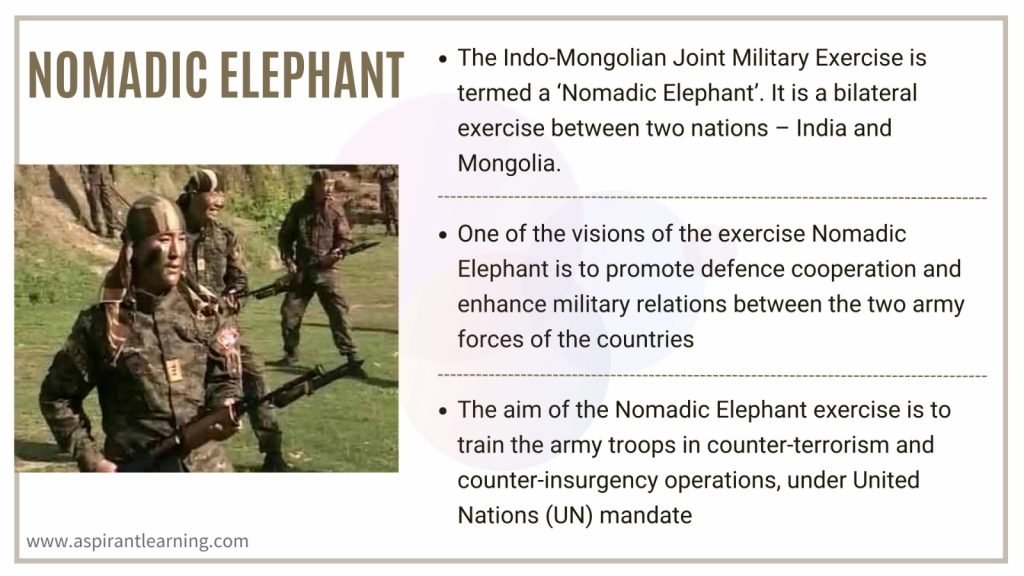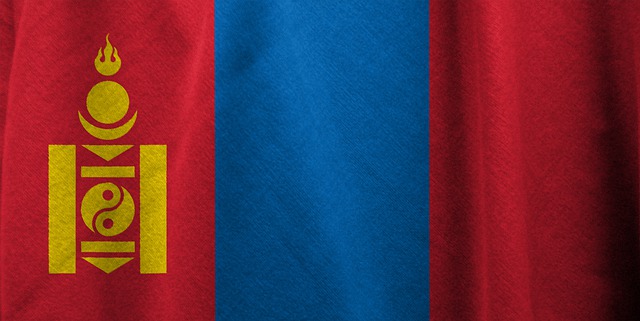News Highlights:
- India-Mongolia Joint Working Group: The 11th meeting of the joint working group between India and Mongolia was recently conducted in New Delhi.
- Both sides reviewed the progress on various bilateral defence cooperation initiatives and identified means to further enhance the existing areas of cooperation and articulated steps in this direction.
Key takeaway:
Both sides expressed satisfaction with the ongoing defence cooperation between the two countries despite the limitations imposed by the Covid-19 pandemic.
India–Mongolia relations:
- Overview:
- India–Mongolia relations, also known as Indian-Mongolian relations or Indo-Mongolian relations, are bilateral relations between the democratic republics of India and Mongolia.
- These relations are rapidly developing, with Indo-Mongolian cooperation formerly limited to diplomatic visits, provision of soft loans and financial aid and collaborations in the IT sector.
- The relationship was enhanced in 2015 by Narendra Modi’s visit to Ulaanbaatar, where the two Prime Ministers declared a “strategic partnership” between the two Asian democracies.
- India established diplomatic relations in December 1955. India was the first country outside the Eastern Bloc to establish diplomatic relations with Mongolia.
- Historical relations:
- During the Delhi Sultanate, the Turco-Mongol conqueror in Central Asia, Timur, attacked the Tughlaq dynasty in the north Indian city of Delhi
- Timur entered Delhi, and the city was sacked, destroyed, and left in ruins.
- In 1526, Babur, a Timurid descendant of Timur and Genghis Khan from Fergana Valley (modern-day Uzbekistan), established the Mughal Empire, covering modern-day Afghanistan, Pakistan, India and Bangladesh.
- The Mughal dynasty ruled most of the Indian subcontinent by 1600; it went into a slow decline after 1707.
- Cultural exchanges:
- India and Mongolia have interacted through Buddhism throughout history.
- Buddhism was carried to Mongolia by Indian missionaries during the early Christian era.
- Mongolia regards India as its “third” neighbour, along with US, Japan, and Germany and a “spiritual neighbour”.
- The India-Mongolian Agreement on Cultural Cooperation, signed in 1961, has governed the Cultural Exchange Programme (CEP) between the two countries.
- The Agreement envisages cooperation in the fields of education by way of scholarships, exchange of experts, participation in conferences, etc.
- Diplomatic Relations:
- India established diplomatic relations with Mongolia in 1955.
- India was the first country outside the Eastern Bloc to establish diplomatic relations with Mongolia.
- The Indian Resident Mission in Ulaanbaatar was opened in 1971.
- This relationship was upgraded to a “strategic partnership” in 2015 when the Indian Prime Minister visited Mongolia and declared it an essential component of ‘The Act East Policy’.
- Economic Cooperation:
- In the southern Dornogovi province of Mongolia, close to Sainshand, an oil refinery with a 1.5 million metric tonne capacity was built by India at the cost of more than USD 1 billion.
- The refinery will meet 75% of Mongolia’s needs for oil refining.
- Bilateral trade between India and Mongolia decreased from USD 38.3 million in 2019 to USD 35.3 million in 2020.
- Defence Cooperation:
- The Indo-Mongolian Joint Military Exercise is termed a ‘Nomadic Elephant
- India is also an active participant in an annual week-long joint training exercise called the Khaan Quest, hosted by Mongolia.

Way forward:
- In order to further the already strong political, economic, and cultural cooperation between India and Mongolia, it is important to build on shared historical and cultural roots.
- Major nations are drawn to Mongolia because of its strategic location at the intersection of Central Asia, Northeast Asia, the Far East, China, and Russia. India may view Mongolia as a region of economic growth that is absorbing high-tech elements and industry know-how as part of a modernization process.
Pic Courtesy: Pixabay
Content Source: PIB



